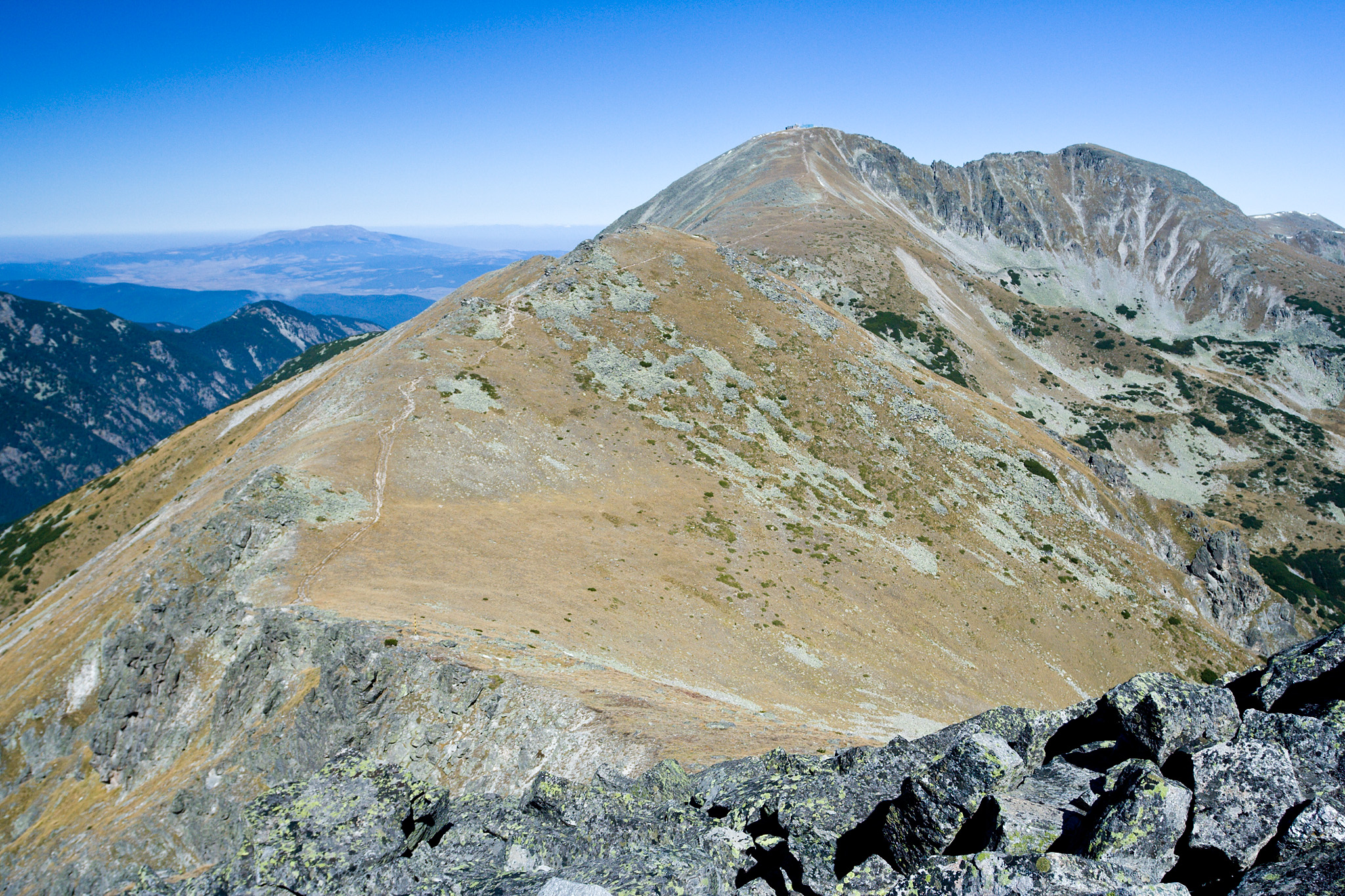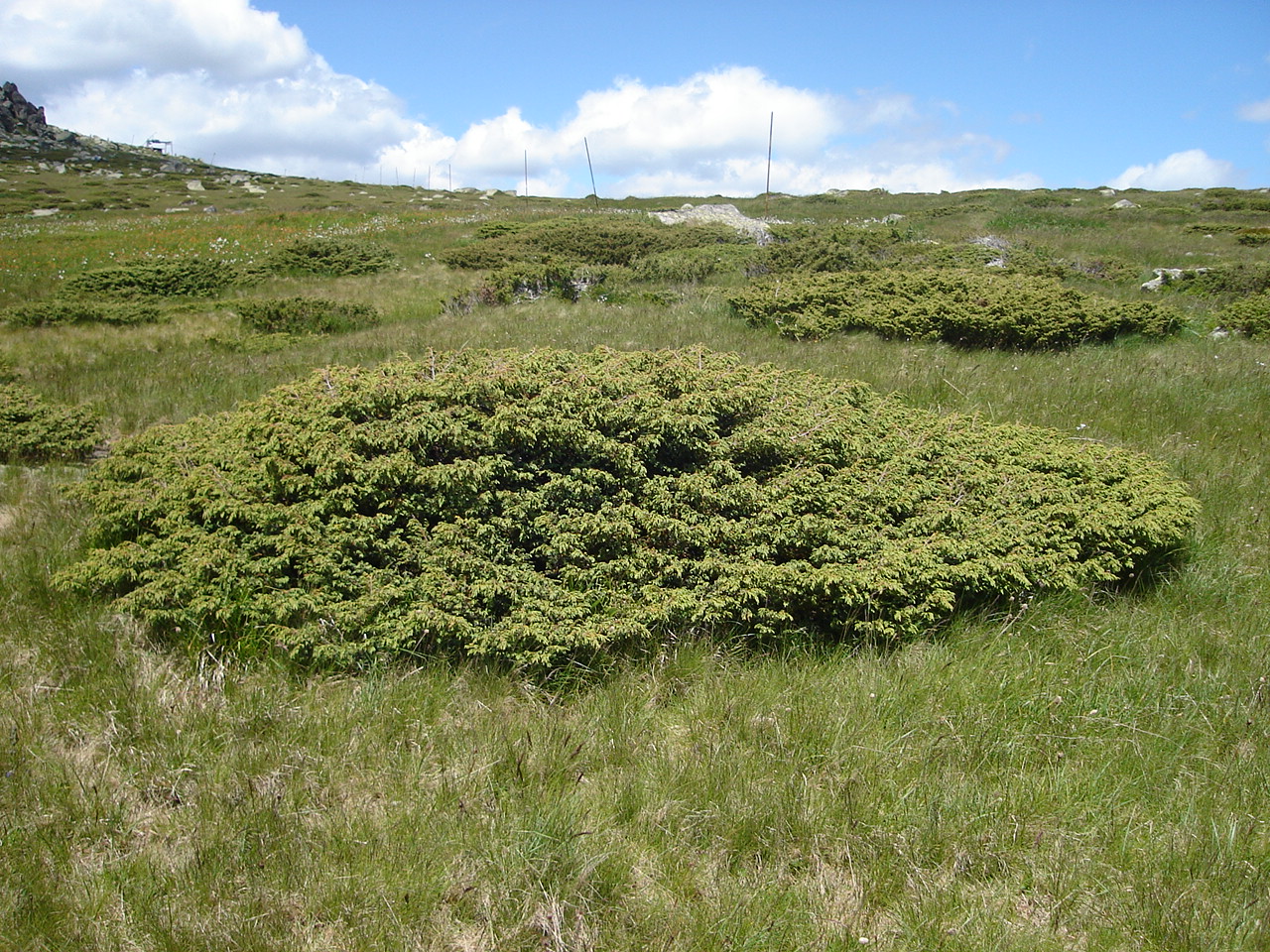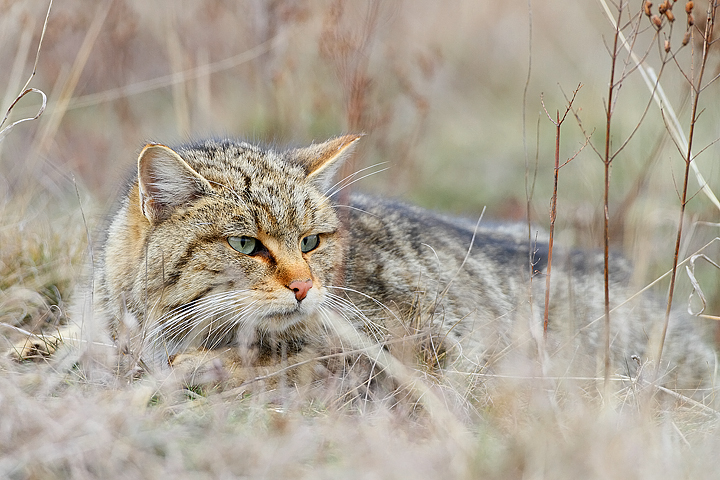|
Stargach
Stargach ( bg, Стъргач, el, Κουλάτα) is a border mountain, situated between Bulgaria and Greece. It is located east of the Slavyanka Mountain, west of the Beslen hill, south of the Pirin Mountains and north of the Kato Novrokopi valley. With its round outlines, Stargach is a reduced copy of the Slavyanka Mountain. Its highest peak is situated in Greek territory – Stargach or Kulata peak (1,270 m.). The highest peak in Bulgarian territory is Asenov peak (1,218 m.) Stargach is a horst, formed of metamorphic rocks – marble, gneiss and mica. There are also granite and quartz at some places. The flora of Stargach consists of mainly of bushes and low forests: South European flowering ash ('' Fraxinus ornus''), common hazel (''Corylus avellana''), common juniper (''Juniperus communis''), lilac (''Syringa'' spp.), etc. At the highest areas of the mountain grow forests of common beech (''Fagus sylvatica''). Common animal species are wildcat, wild boar, European ... [...More Info...] [...Related Items...] OR: [Wikipedia] [Google] [Baidu] |
Mountains Of Bulgaria
Mountains constitute a significant part of Bulgaria and are dominant in the southwest and central parts. Bulgaria's highest mountains are Rila (highest peak Musala, 2925 m; the highest in the Balkans) and Pirin (highest peak Vihren, 2914 m). The large mountain chain of Stara planina (Balkan Mountains) runs west–east across the entire country, bisecting it and giving the name to the entire Balkan peninsula. Other extensive mountains are the massifs Rhodopes and Strandzha in the south. List of mountains in Bulgaria with their highest peaks List of peaks above 2500 m Gallery Image:Selo Kostenets 001.jpg, Rila as seen from the village of Kostenets, Sofia Province Image:Vihren.JPG, Vihren Peak in Pirin as seen from the north Image:Tevno ezero i Kamenica.jpg, Kamenitsa Peak and Tevno Ezero Lake, Pirin Image:Stargach and Slavyanka.jpg, Stargach and Slavyanka mountains Image:Strandzha-dinev-2.jpg, View from Papiya Peak, Strandzha Image:Maliovitsa_54072.jpg, Malyovitsa Peak ... [...More Info...] [...Related Items...] OR: [Wikipedia] [Google] [Baidu] |
Nova Lovcha
Nova Lovcha ( bg, Нова Ловча) is a village in Hadzhidimovo Municipality, in Blagoevgrad Province, Bulgaria. Geography Nova Lovcha is located at the foot of Slavyanka mountain on the Bulgarian-Greek border. The terrain is mostly hilly and flat on the east. The soils are brown. Near the village there is a drying river, which springs are near the village of Paril and is fed mostly by rain. 1–2 km east of the village there is a small artificial lake, which is also fed by rain and used for economic activities. The climate is continental-Mediterranean. The summers are hot and dry and the winters are cold. The average temperature in summer is 24-25 ° С. The winter is mild. The maximum temperature in winter is 1-2 °C. Precipitation is about 600–700 mm per year. The wind is light to moderate in summer. The snow cover in winter reaches 1 meter. History Before 1913 In the area around the village there are remains of ancient settlements, as well as an old R ... [...More Info...] [...Related Items...] OR: [Wikipedia] [Google] [Baidu] |
Ilinden, Blagoevgrad Province
Ilinden ( bg, Илинден ) is a village in Hadzhidimovo Municipality, in Blagoevgrad Province, Bulgaria. It is located in a mountainous area, on the northern slopes the Stargach mountain. It is 14 kilometers southwest of Hadzidimovo Municipal Center and 18 kilometers southeast of Gotse Delchev. The climate is transitional Mediterranean with mountain influence with summer minimum and winter maximum of rainfall. The average annual rainfall is about 700 mm. The Mutnitsa River flows through the village. The soils are predominantly humus-carbonate. History The old name of the village before 1951 is Libyahovo. According to professor Ivan Duridanov, the settlement name Libyahovo with an earlier form, Lyubyahovo, comes from the personal name Lyubyah. According to a local legend, the name comes from the name of one Ali Bey, and according to another, from the great love (lyubov in Bulgarian), uniting his inhabitants against the Ottoman rule during the Ottoman rule. There are ruins ... [...More Info...] [...Related Items...] OR: [Wikipedia] [Google] [Baidu] |
Bulgaria
Bulgaria (; bg, България, Bǎlgariya), officially the Republic of Bulgaria,, ) is a country in Southeast Europe. It is situated on the eastern flank of the Balkans, and is bordered by Romania to the north, Serbia and North Macedonia to the west, Greece and Turkey to the south, and the Black Sea to the east. Bulgaria covers a territory of , and is the sixteenth-largest country in Europe. Sofia is the nation's capital and largest city; other major cities are Plovdiv, Varna and Burgas. One of the earliest societies in the lands of modern-day Bulgaria was the Neolithic Karanovo culture, which dates back to 6,500 BC. In the 6th to 3rd century BC the region was a battleground for ancient Thracians, Persians, Celts and Macedonians; stability came when the Roman Empire conquered the region in AD 45. After the Roman state splintered, tribal invasions in the region resumed. Around the 6th century, these territories were settled by the early Slavs. The Bulgars, led by Asp ... [...More Info...] [...Related Items...] OR: [Wikipedia] [Google] [Baidu] |
Juniperus Communis
''Juniperus communis'', the common juniper, is a species of small tree or shrub in the cypress family Cupressaceae. An evergreen conifer, it has the largest geographical range of any woody plant, with a circumpolar distribution throughout the cool temperate Northern Hemisphere. Description ''Juniperus communis'' is very variable in form, ranging from —rarely —tall to a low, often prostrate spreading shrub in exposed locations. It has needle-like leaves in whorls of three; the leaves are green, with a single white stomatal band on the inner surface. It never attains the scale-like adult foliage of other members of the genus. It is dioecious, with male and female cones (both of which are wind pollinated) on separate plants. The male cones are yellow, long, and fall soon after shedding their pollen in March–April. The fruit are berry-like cones known as juniper berries. They are initially green, ripening in 18 months to purple-black with a blue waxy coating; they are spheri ... [...More Info...] [...Related Items...] OR: [Wikipedia] [Google] [Baidu] |
International Mountains Of Europe
International is an adjective (also used as a noun) meaning "between nations". International may also refer to: Music Albums * ''International'' (Kevin Michael album), 2011 * ''International'' (New Order album), 2002 * ''International'' (The Three Degrees album), 1975 *''International'', 2018 album by L'Algérino Songs * The Internationale, the left-wing anthem * "International" (Chase & Status song), 2014 * "International", by Adventures in Stereo from ''Monomania'', 2000 * "International", by Brass Construction from ''Renegades'', 1984 * "International", by Thomas Leer from ''The Scale of Ten'', 1985 * "International", by Kevin Michael from ''International'' (Kevin Michael album), 2011 * "International", by McGuinness Flint from ''McGuinness Flint'', 1970 * "International", by Orchestral Manoeuvres in the Dark from '' Dazzle Ships'', 1983 * "International (Serious)", by Estelle from '' All of Me'', 2012 Politics * Political international, any transnational organization of ... [...More Info...] [...Related Items...] OR: [Wikipedia] [Google] [Baidu] |
Landforms Of Blagoevgrad Province
A landform is a natural or anthropogenic land feature on the solid surface of the Earth or other planetary body. Landforms together make up a given terrain, and their arrangement in the landscape is known as topography. Landforms include hills, mountains, canyons, and valleys, as well as shoreline features such as bays, peninsulas, and seas, including submerged features such as mid-ocean ridges, volcanoes, and the great ocean basins. Physical characteristics Landforms are categorized by characteristic physical attributes such as elevation, slope, orientation, stratification, rock exposure and soil type. Gross physical features or landforms include intuitive elements such as berms, mounds, hills, ridges, cliffs, valleys, rivers, peninsulas, volcanoes, and numerous other structural and size-scaled (e.g. ponds vs. lakes, hills vs. mountains) elements including various kinds of inland and oceanic waterbodies and sub-surface features. Mountains, hills, plateaux, and plains are the fo ... [...More Info...] [...Related Items...] OR: [Wikipedia] [Google] [Baidu] |
Mountains Of Greece
A mountain is an elevated portion of the Earth's crust, generally with steep sides that show significant exposed bedrock. Although definitions vary, a mountain may differ from a plateau in having a limited summit area, and is usually higher than a hill, typically rising at least 300 metres (1,000 feet) above the surrounding land. A few mountains are isolated summits, but most occur in mountain ranges. Mountains are formed through tectonic forces, erosion, or volcanism, which act on time scales of up to tens of millions of years. Once mountain building ceases, mountains are slowly leveled through the action of weathering, through slumping and other forms of mass wasting, as well as through erosion by rivers and glaciers. High elevations on mountains produce colder climates than at sea level at similar latitude. These colder climates strongly affect the ecosystems of mountains: different elevations have different plants and animals. Because of the less hospitable terrain and ... [...More Info...] [...Related Items...] OR: [Wikipedia] [Google] [Baidu] |
European Hare
The European hare (''Lepus europaeus''), also known as the brown hare, is a species of hare native to Europe and parts of Asia. It is among the largest hare species and is adapted to temperate, open country. Hares are herbivorous and feed mainly on grasses and herbs, supplementing these with twigs, buds, bark and field crops, particularly in winter. Their natural predators include large birds of prey, canids and felids. They rely on high-speed endurance running to escape predation, having long, powerful limbs and large nostrils. Generally nocturnal and shy in nature, hares change their behaviour in the spring, when they can be seen in broad daylight chasing one another around in fields. During this spring frenzy, they sometimes strike one another with their paws ("boxing"). This is usually not competition between males, but a female hitting a male, either to show she is not yet ready to mate or to test his determination. The female nests in a depression on the surface of the grou ... [...More Info...] [...Related Items...] OR: [Wikipedia] [Google] [Baidu] |
Wild Boar
The wild boar (''Sus scrofa''), also known as the wild swine, common wild pig, Eurasian wild pig, or simply wild pig, is a suid native to much of Eurasia and North Africa, and has been introduced to the Americas and Oceania. The species is now one of the widest-ranging mammals in the world, as well as the most widespread suiform. It has been assessed as least concern on the IUCN Red List due to its wide range, high numbers, and adaptability to a diversity of habitats. It has become an invasive species in part of its introduced range. Wild boars probably originated in Southeast Asia during the Early Pleistocene and outcompeted other suid species as they spread throughout the Old World. , up to 16 subspecies are recognized, which are divided into four regional groupings based on skull height and lacrimal bone length. The species lives in matriarchal societies consisting of interrelated females and their young (both male and female). Fully grown males are usually solitary ... [...More Info...] [...Related Items...] OR: [Wikipedia] [Google] [Baidu] |
Wildcat
The wildcat is a species complex comprising two small wild cat species: the European wildcat (''Felis silvestris'') and the African wildcat (''F. lybica''). The European wildcat inhabits forests in Europe, Anatolia and the Caucasus, while the African wildcat inhabits semi-arid landscapes and steppes in Africa, the Arabian Peninsula, Central Asia, into western India and western China. The wildcat species differ in fur pattern, tail, and size: the European wildcat has long fur and a bushy tail with a rounded tip; the smaller African wildcat is more faintly striped, has short sandy-gray fur and a tapering tail; the Asiatic wildcat (''F. lybica ornata'') is spotted. The wildcat and the other members of the cat family had a common ancestor about 10–15 million years ago. The European wildcat evolved during the Cromerian Stage about 866,000 to 478,000 years ago; its direct ancestor was ''Felis lunensis''. The ''silvestris'' and ''lybica'' lineages probably diverged about 173,000 ye ... [...More Info...] [...Related Items...] OR: [Wikipedia] [Google] [Baidu] |


.jpg)

.jpg)
